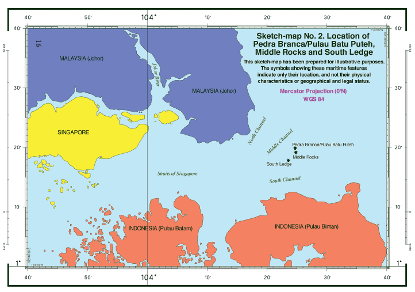Introduction
In contemporary armed conflicts, the question of whether media infrastructure may be lawfully targeted has become increasingly contentious. With the growing fusion of information dissemination, psychological operations, and military strategy, states have periodically asserted that media outlets—particularly state-run broadcasting facilities—constitute legitimate military objectives. Such claims are often framed within the rubric of dual-use infrastructure or justified on the basis of alleged contributions to enemy war efforts through propaganda or incitement. However, these assertions raise fundamental concerns under international humanitarian law (IHL), particularly in relation to the principles of distinction, proportionality, and precaution.
The legal framework established under the 1977 Additional Protocol I to the Geneva Conventions prohibits attacks on civilian objects unless they qualify as military objectives, defined by their effective contribution to military action and the advantage their destruction offers in the circumstances prevailing at the time of attack (Article 52(2), API). Propaganda—understood as the dissemination of information, whether in the form of facts, arguments, rumours, half-truths, or falsehoods, aimed at influencing public opinion and often conveyed through mass media (Britannica)—however offensive or influential, does not automatically satisfy these criteria.The indiscriminate or disproportionate targeting of such infrastructure risks eroding the civilian-military distinction and undermining protections afforded to journalists and media workers under both IHL and international human rights law.
This article examines the legal status of media infrastructure under IHL by analysing key precedents. It further considers the contemporary implications of recent state practice, most notably the Israeli strike on Iran’s Radio and TV Broadcasting center (IRIB) in June 2025. Through these case studies, the article interrogates the normative boundaries of lawful targeting and assesses the risks of expanding the definition of military objectives to encompass media functions.
Legal Framework under International Humanitarian Law
IHL governs the conduct of hostilities with the aim of limiting the effects of armed conflict on civilians and civilian objects. Its foundational principles—distinction, military necessity, proportionality, and precaution—serve as the legal criteria against which the lawfulness of any targeting operation is assessed.
The principle of distinction obliges parties to a conflict to distinguish at all times between civilian objects and military objectives. Civilian objects, including media installations, enjoy protection from attack unless and for such time as they qualify as military objectives. This standard is codified in Article 52(2) of API to the Geneva Conventions, which defines military objectives as:
“Those objects which by their nature, location, purpose or use make an effective contribution to military action and whose total or partial destruction, capture or neutralization, in the circumstances ruling at the time, offers a definite military advantage.”
This two-pronged test—requiring both effective military contribution and definite military advantage—is cumulative and must be applied strictly. Under customary international humanitarian law, as reflected in Rule 10 of the ICRC’s study,.there exists a presumption of civilian status unless sufficient evidence rebuts it. Attacks based on mere suspicion or speculative intelligence violate this presumption and may amount to indiscriminate attacks prohibited under Customary IHL Rule 11.
This framework becomes particularly complex in the case of dual-use objects, such as television stations or communication infrastructure. While these may serve both civilian and military functions, their targeting is lawful only if the military use is concrete, substantial, and verifiable. For instance, a broadcast station used to transmit military orders or facilitate real-time targeting may lose its civilian protection. However, the dissemination of propaganda, political messaging, or morale-boosting content, even if supportive of the war effort, does not alone render a media outlet a military objective (ICRC).
Moreover, targeting media infrastructure raises concerns under international human rights law, particularly the right to freedom of expression under Article 19 of the ICCPR. In both international and non-international armed conflicts, attacks on journalists and media may have chilling effects on press freedom, democratic oversight, and civilian access to information. These risks underscore the need for narrow legal interpretations and stringent evidentiary standards when determining the status of media facilities during armed conflict.
Precedents of Media Targeting: NATO (1999) and the United States (2003)
Three significant precedents illustrate the evolving and controversial state practice of targeting media infrastructure during armed conflict: NATO’s bombing of Radio Television Serbia (RTS) in 1999, the United States’ strike on Iraqi state television in 2003, and Russia’s attacks on Ukrainian broadcasting facilities in 2022.
On 23 April 1999, NATO bombed the headquarters of Radio Television Serbia (RTS) in Belgrade, killing sixteen civilian media workers. NATO sought to classify it as a dual-use object—civilian in appearance but performing military functions, described the station as a “legitimate target” for its role in spreading hate speech and inciting violence.
The Final Report of the ICTY Prosecutor’s Committee acknowledged the attack “raises serious questions,” but declined to open a criminal investigation, citing the lack of clarity about military necessity and targeting criteria. By contrast, Human Rights Watch and Amnesty International condemned the strike as a violation of IHL, arguing that targeting a civilian broadcaster based solely on its propagandistic output failed to meet the requirements of Article 52(2) of API.
A similar legal ambiguity surrounded the US’ bombing of Iraqi state television on March 2003. The U.S. officials argued that the broadcaster constituted a key node in Saddam Hussein’s command-and-control structure and that it was actively used for psychological operations aimed at resisting coalition forces. The rationale emphasized the need to neutralize information capabilities that could be used to coordinate resistance, maintain regime control, or shape public opinion in ways detrimental to U.S. military objectives. Human Rights Watch criticised the strike as an unlawful attack on a civilian object, noting that the airing of propaganda or morale-boosting speeches does not convert a media outlet into a military objective under IHL.
More recently, in 2022, Russian forces targeted Ukrainian television towers and broadcasting facilities, including a deadly strike on the Kyiv TV tower. The Russian Ministry of Defence claimed these attacks were aimed at degrading Ukraine’s command capabilities and limiting “nationalist propaganda.” However, the facilities appeared to primarily serve civilian communication functions.
Taken together, these cases reveal a troubling pattern in which states expand the category of “military objective” to include media infrastructure on the basis of its psychological or informational utility. While propaganda may play a strategic role, IHL demands a concrete and verifiable military contribution. Without such evidence, attacks on media infrastructure risk undermining core protections afforded to civilian objects and personnel under the law of armed conflict.
The 2025 Israeli Strike on IRIB: Legal Assessment and Implications
On 16 June 2025, the Israeli military conducted an airstrike targeting the headquarters of the IRIB in Tehran. The strike followed escalating regional tensions and was described by the Israeli authorities as a response to Iranian military activities involving proxy groups in Lebanon and Syria. According to Israeli spokesperson, the IRIB facility functioned as “a communications centre of the Iranian regime” that served “Iran’s armed forces” and was allegedly used “to advance operational activity under the cover of civilian assets and infrastructure.” Israeli Defence Minister described IRIB as “the propaganda and incitement broadcasting authority of the Iranian regime.”
This rationale reflects a recurring pattern in the legal discourse surrounding attacks on media infrastructure during armed conflict. The critical question is whether the IRIB complex, as targeted, constituted a military objective within the meaning of Article 52(2) of API. Unlike cases where media installations are used for transmitting military orders or integrated into a command-and-control structure, Israel’s justification appears to rest primarily on IRIB’s alleged role in supporting hostile operations through “operational activity” and incitement. However, public evidence substantiating the claim that IRIB was used for concrete military functions—such as relaying military communications, coordinating troop movements, or controlling drone operations—has not been made available. The invocation of “incitement” and “propaganda” recalls the arguments used in the RTS and Iraqi TV cases, which international legal scholars and human rights bodies overwhelmingly rejected as insufficient to justify direct targeting.
Furthermore, even if IRIB content included calls to violence or disinformation campaigns, such communicative acts do not in themselves transform the broadcaster into a lawful military target. The International Criminal Tribunal for Rwanda (ICTR) did hold that media incitement to genocide may amount to a crime, as in the case of RTLM. However, the threshold for criminal incitement is far higher than the legal criteria for targeting under IHL. A broadcaster that merely expresses hostile political positions or supports the narrative of one party to a conflict remains protected unless it is directly and effectively used for military purposes.
Even assuming that part of the IRIB complex was being used for military purposes, the principle of proportionality remains relevant. Under Article 51(5)(b) of Additional Protocol I, the attack would still be unlawful if the expected civilian harm—especially to non-involved personnel and infrastructure—was excessive in relation to the anticipated military advantage. Without verifiable distinction between military and civilian components, the legality of the strike remains questionable.
Normative Concerns and Forward-Looking Reflections
The recurring targeting of media infrastructure in armed conflicts exposes a fundamental tension within IHL: the challenge of preserving the civilian character of information systems in an era where information itself is increasingly weaponised. The legal framework governing the conduct of hostilities, particularly Article 52(2) of API, was crafted with tangible military objectives in mind—command centres, radar systems, or ammunition depots. Yet, the nature of modern warfare has blurred these boundaries, giving rise to attempts by belligerents to classify communicative institutions as legitimate targets based on their perceived psychological or ideological effects.
This trend raises significant normative concerns. First, the repeated invocation of “propaganda” or “incitement” as a justification for targeting media assets risks eroding the principle of distinction, which is central to IHL. As observed in the NATO and U.S. precedents, and now echoed in the 2025 IRIB strike, states increasingly assert that the informational function of media outlets constitutes a contribution to military action. However, such a position introduces a dangerously subjective criterion into targeting decisions—one that is open to political abuse and lacks the evidentiary rigour required by law.
Second, the growing permissiveness toward targeting broadcasters undermines the protection of freedom of expression in wartime. Civilian populations depend on access to information, including from state-affiliated outlets, to navigate the complexities of conflict. Striking media institutions not only silences dissent but also curtails the broader communicative ecosystem, violating the spirit, if not the letter, of Article 19 of the ICCPR. This is particularly troubling in asymmetrical conflicts where non-Western or non-aligned media are more likely to be delegitimised as propagandistic.
Going forward, there is a pressing need for normative clarification, either through state practice, ICRC interpretive guidance, or judicial interpretation. A stricter evidentiary threshold for classifying media facilities as military objectives should be affirmed, one that demands demonstrable, not inferential, military use. Additionally, the legal community must resist the temptation to dilute civilian protections in response to evolving doctrines of information warfare. The integrity of IHL depends on ensuring that legal categories are not stretched beyond recognition in pursuit of strategic expediency.
[Note: The image accompanying this blog post is AI-generated and was provided by the author.]
Author
Hesam Nourooz Pour is a researcher in law and technology, and affiliated with the Global Internet Freedom Initiative.





